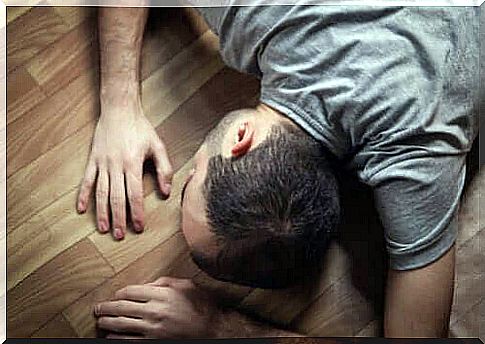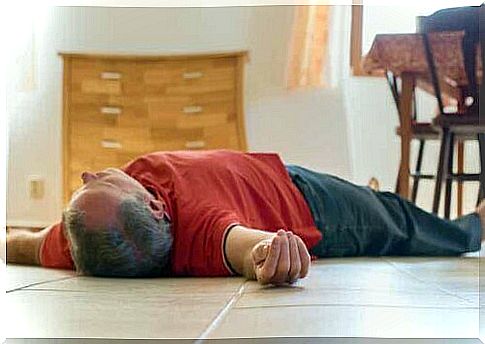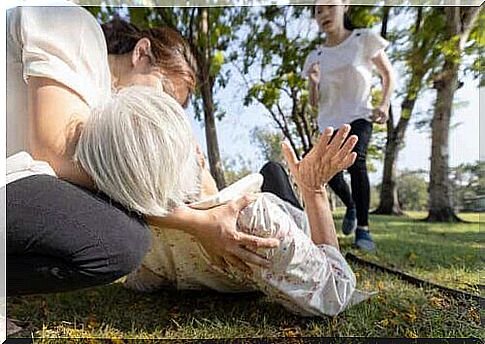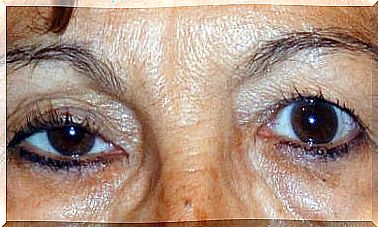What Is Syncope And What Types Are There?

Syncope is a very common situation. It consists of the temporary loss of consciousness and postural tone, that is, the patient temporarily loses consciousness. It is caused by a decrease in blood flow to the brain.
Many people use the term fainting instead of syncope . The fact that cerebral blood flow decreases can be due to several reasons. That’s why there are different types based on their etiology.
General symptoms of syncope
Syncope, as we saw in the introduction, is defined as the transient loss of consciousness and postural tone. According to a study published in Frontiers in Physiology , it is a very common problem. Its incidence is estimated to be between 15 and 39% of the general population.
It can affect people of any age and gender. However, it is true that as a person ages, its incidence increases. From the age of 70, this problem becomes more common.
Generally, a series of very characteristic symptoms accompany fainting. According to the MSD Manual, presyncope is characterized by the perception of dizziness and impending fainting. However, there is still no real loss of consciousness.
A person suffering from syncope completely loses consciousness. The skin usually becomes cool and clammy. The pulse weakens and breathing becomes very shallow. Before losing consciousness, there is dizziness, blurred vision, headache, and weakness.
In some cases, involuntary muscle movements may occur , which are confused with seizures, although they are not. This is one of the most relevant differential diagnoses to be carried out.
What types of syncope are there?
We mentioned earlier that syncope is caused by a decrease in blood flow to the brain. This, in turn, can have several causes. That’s why we can distinguish different types, which we’ll explain below.

neuromediated syncope
This type is also known as reflex syncope. It is the most common. What happens is that certain reflexes of the autonomic nervous system become deregulated. The autonomic nervous system is responsible for maintaining blood pressure and heart rate.
As a result, the heart slows down and blood pressure drops. This means less blood flow to the brain.
A vasovagal variant, as explained by Mayo Clinic experts , is one that occurs when the body reacts disproportionately to certain triggers. For example, in the face of pain or strong emotions.
On the other hand, we have the fainting related to the carotid sinus. It appears when there is pressure on the carotid artery, which is located in the neck. It is common for some men to shave or wear very tight ties.
Finally, neuromediated syncope can also be situational, and it occurs when we perform certain specific actions or movements, such as coughing or laughing.
Fainting of cardiac origin
Cardiac or cardiogenic syncope, as the name suggests, is caused by a heart problem. The most common cause is arrhythmias such as tachycardias.
There may also be a structural problem, such as valve disorders or ischemic cardiomyopathy. These patients often experience palpitations and chest pain.
Orthostatic syncope
Orthostatic syncope is one that occurs when a person stands up. According to a study published in Offarm , the cause is that this movement causes a sudden drop in blood pressure.
It is sometimes related to certain drugs taken, such as antidepressants. It can also be associated with alcohol consumption, dehydration and blood loss.
cerebrovascular syncope
Cerebrovascular syncope is related to a problem in the blood vessels responsible for supplying oxygenated blood to the brain. It is one of the least frequent and most serious.
It could be due to the presence of aneurysms or being behind a stroke. In most cases, the cause is due to a problem with atherosclerosis that reduces the size of the arteries and prevents blood from flowing normally.
How to deal with the different types of syncope?
As we saw earlier, syncope is characterized by a series of symptoms and some of them act as a warning of what is going to happen. It is important to know how to act to prevent possible complications related to falls or blows caused by loss of consciousness.
How to act if you are going to pass out
When the feeling of weakness or impending fainting arises, it is essential to find a place to sit or lie down. The ideal is to lie down with your legs raised to favor the blood flow to the brain.
So, in addition, we can reduce the risk of falling if fainting occurs. When postural tone is lost and the person falls, it is possible to hit the head on any object or on the ground itself.
It is important to remain lying down or sitting until the dizzy feeling goes away. Likewise, when it’s time to get up, do it slowly and progressively.
How to help others
If you see someone dizzy or faint, try to help them. The first thing is to check the heart rate and whether the person is breathing. It is important to remember that lung dynamics are usually weaker and shallower, but we must feel them.
Whatever the case, it’s also critical to ask for help, especially if the person doesn’t regain consciousness or has an injury.

How to make the differential diagnosis?
The fact that there are so many reasons why fainting can occur sometimes makes the differential diagnosis difficult. Although it is true that the vast majority of cases are benign and transient, when the condition recurs, it is essential to find the reason.
That’s why the doctor must know the patient’s complete medical history, especially if he suffers from any type of illness or if he takes any medication. Also, it is important to have a correct physical exam.
The most used complementary exams are the electrocardiogram and the echocardiogram. The first allows us to observe the electrical activity of the heart. It is a simple, innocuous and low cost test. The echocardiogram, in turn, provides a detailed image of the cardiac morphology.
The practitioner may also order a stress test. Carotid sinus massage consists of massaging the carotid artery to see if syncope occurs when doing so. It is complemented with MRI or CT scan.
We can prevent some types of syncope
Syncope usually occurs due to certain triggers that can be easily identified. For example, it is common for them to appear when there is low blood sugar or dehydration.
Therefore, an easy way to avoid fainting is to eat several times a day, even in smaller amounts. Likewise, it’s important to drink plenty of water. Avoiding alcohol and other drugs, such as marijuana, also reduces your risk.
Every time you have to get up, it is recommended to do it slowly and progressively, especially if you have been lying down for a long time. However, if fainting occurs frequently, consult a doctor.









